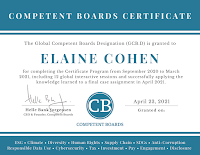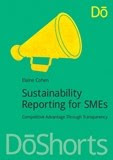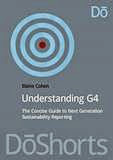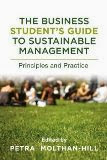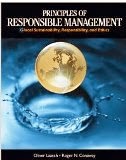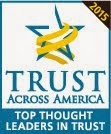I love first-time CSR reports. A first report is an opportunity to create a new slate, set up a foundation for future reporting, position the Company's sustainability message in the most appropriate way, and establish a presence amongst the leading companies in the world that value transparency. It is a blank page, which you can fill to describe your most important impacts. You can be creative, innovative and have a little fun at the same time.
Unfortunately, the production of a first report is usually fraught with so many first-time issues for a Company to address, that, wonderful as first reports are, they sometimes fall short of seizing the opportunity. Common issues with first reports are around the substance of data and information available to include, whether to disclose or not ever if the info is available, what sort of a report to write (GRI or not GRI and at what application level). Report format in print, PDF or online or a combination of all three. Reporting period. Structure. Scope. Style. Concept. Length. Summary report or not. Who approves the final version. Design issues. Print run. Many things to decide and not always easy decisions to make. Every first-time report provides a massive amount of learning for the reporting organization.
I have taken a look at 6 first time reports published in 2010, randomly selected. (Thanks to
CorporateRegister.com , as usual, a wonderful research source for all reports). Whilst I can't be sure what each company learnt in the process, I have tried, as an outside observer, to extract what I think
WE can learn from
THEM in this first cycle. Here we go, in no particular order:
94 pages, GRI A+ level
This leader in car production in India, the Indian subsidiary of Japanese Suzuki, has manufactured over 7 million cars since 1983 and in addition, has produced a very nice first Sustainability Report entitled "Give Get Grow", because, as they say, you have to GIVE in order to GET and to GROW. The report is nicely designed, clearly written, good on disclosure, includes a materiality matrix, a Japanese glossary of management terms and principles, GRI Index and verification statement. Despite quoting Mother Theresa for a little local flavor, this report reflects a decidedly Japanese culture. This is a male-dominated company with only 207 of the total 7,159 employees being women. It always makes me wonder when a company claims they do not discriminate, how it is that there are so few women. However, this is one of the better first reports around, both in terms of transparency and content.
Key learning: A great concept always adds credibility and interest to a CSR report.
Office2Office plc CSR Review 2010
30 pages, not GRI
This is a business services supplier based in the UK, employing around 1,000 people. The report follows what I call the Quadrant Model - workplace, marketplace, community and environment - and does a good job in covering core practices relating to corporate responsibility in each quadrant. It's layout is clear, language is readable and coverage comprehensive. However, it's a "good-corporate-citizen" report in the sense that it reports (well) what the Company is doing (well), covering off all bases in the basic model of "we are ethical". The Company explains its initiatives well, such as closed-loop paper recycliing - office paper supplied is returned and recycled, and re-supplied by the Company. Clearly the Company is earnest in its first base approach to Corporate Reponsibility.
15 pages, not GRI
Who is Edcoms? Not sure. The "report" says they are a "leading communications and research agency working for the private, public and third sectors". But don't expect to find any diclosures in this "report", which follows what I call the Marketing Brochure Model. It a nice round-up of what this company is doing in their education and leaning programmes. There appear to be two initiatives of value - a staff survey on what CSR means to them and a project to implement ISO 14,000, which at the time of publication they had not completed. Aside from this, there is plenty of opportunity to produce fuller reports in the future.However, I do think that, if it's not a CSR report, it should not be called a CSR report.
Key learning: Something is better than nothing - and even the most basic of reports can be a foundation for more in the future.
Biogen Idec Inc 2009 Corporate Citizenship Report
14 pages, GRI C level
This report is called "Driving towards a sustainable future", a title which immediately made me think of a transport company, but Biogen is actually a "leader in the development of innovative therapies" for multiple sclerosis, lymphoma and rheumatoid arthritis, employing 4,750 people. This first report follows what I call the 3P model - split into three main sections - business, environment and society. It's short, but demonstrates evidencce of strong progress on sustainability issues. The report includes a high-level materiality matrix, evidence of serious thinking about the company's impacts. Biogen has developed their own risk-weighted environmental index which shows improved performance since 2007, though the methodology in not transparent. Biogen also makes a Sustainability Award internally for the best efforts and positive impacts of employees - a nice program. Indeed, this short report contains much about employee workplace responsibilities and impacts which is quite impressive. The report was printed using certified wind power.Whoosh!
Key learning: If you have a strong CSR program in place, you can deliver a meaningful, short, report, covering key bases, without going the full stretch on transparency.
Web based report with a PDF download of 55 pages, GRI C level
Tamro employs around 6,000 people in the pursuit of their mission which is to be a vital link in the healthcare system, as a pharmaceutical wholesaler and pharmacy operator. This is a report designed for web, not particularly interactive but with a good web structure. The PDF download is simply a copy of the web-pages, which doesn't work if you are just reading the PDF, but adequate if your first point of reference is the website.The hyperlinks also take you to the annual report for relevant sections. There is a glossary and a feedback section. The report follows what I call the 3P model - economic, environment and social responsibility sections. The report is excellent, including a materiality index, and a table showing prioritization of stakeholder interests based on structured feedback solicited from stakeholder groups. (Incidentally, compliance is the most important, and energy consumption the least important!) . The web site includes case studies in each of the resport sections, with a video from employees and also from the Managing Director of a customer company. I had to smile at one of the videos of a Tamro Customer Service Director who says : "When it comes to Tamro’s weaknesses, Kaselaan cannot think of anything major." (As a woman in a business with no women on the Executive Team or Board, I would be able to think of something major haha) However, all in all, a very impressive web-based first report.
Key learning : A web-based first report can provide great possibilities for showing the faces of the company.
Web report with PDF download of 90 pages GRI C level
This is an Italian Food Group with 16,000 employees, bringing the Mediterranean diet to the world. This 2008 report, published in August 2010, follows a deep exercise in assessment of CSR strategy and core impacts, which took two years to complete and therefore delayed the timely publication of a first report. The report covers a systematic approach to stakeholder mapping, analysis, engagement in a transparent way and includes stakeholder recommendations and performance indicators adopted as a result. One of the most thorough treatments of stakeholder engagement you can find in a CSR report. The report also includes targets in each section to the year 2014 - clearly a long term approach. Actually, the PDF, not the web, works better for me in this report, which follows what I call a Materiality Model, structured around the prioritzation of material issues, taking in this case, nutrition as the first and supply chain as the second issue addressed in the report, followed by other topics such as environment, people, community etc. Each section is introduced with a philosophical and contextual commentary, which adds a personal touch to the report and also a certain charm.
Key learnings: Better late than never ! AND a great stakeholder mapping process.
So, to conclude, even the first- timers can teach us old-timers something. Considering the extra effort necessary to produce a first report, I say Bravo! to all these Companies. Support them by taking a look and giving them your feedback!
Actually, I planned this post to cover 20 first time reports but I found that doing justice to each is rather time-consuming and also, due to my August diet, I am suffering from a severe deficiency of Chunky Monkey. Still, as we can learn from Edcoms, 30% of something is better than 100% of nothing.
elaine cohen, CSR consultant, Sustainabilty Reporter, HR Professional, Ice Cream Addict. Contact me via www.twitter.com/elainecohen on Twitter or via my business website www.b-yond.biz/en (BeyondBusiness, CSR Consulting and Sustainability Reporting firm). Elaine is the author of CSR for HR: A necessary partnership for advancing reponsible business practices.




